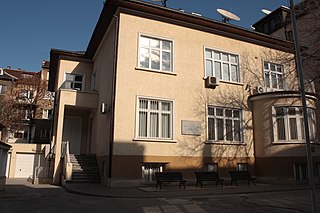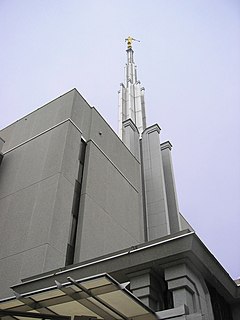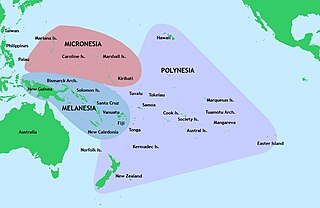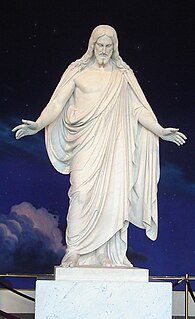Related Research Articles

Laie is a census-designated place (CDP) located in the Koolauloa District on the island of Oahu in Honolulu County, Hawaii, United States. In Hawaiian, lāʻie means "ʻie leaf". The population was 5,963 at the 2020 census.

Brigham Young University–Hawaii (BYU-Hawaii) is a private university in Laie, Hawaii. It is owned and operated by The Church of Jesus Christ of Latter-day Saints. BYU-Hawaii was founded in 1955, and became a satellite campus of Brigham Young University (BYU) in 1974. In 2004, it was made a separate institution. The university's sole focus is on undergraduate education.

Laie Hawaii Temple is a temple of The Church of Jesus Christ of Latter-day Saints located on the northeast shore of the Hawaiian island of Oʻahu. The temple sits on a small hill, a half-mile from the Pacific Ocean, in the town of Lāʻie, 35 miles (56 km) from Honolulu. Along with Brigham Young University–Hawaii and the Polynesian Cultural Center, the Laie Hawaii Temple plays an important role in the town of Lā'ie, with the Visitors' Center attracting more than 100,000 people annually.
The Polynesian Cultural Center (PCC) is a family-centered cultural tourist attraction and living museum located in Laie, on the northern shore of Oahu, Hawaii. The PCC is owned by The Church of Jesus Christ of Latter-day Saints, was dedicated on October 12, 1963, and occupies 42 acres of land belonging to nearby Brigham Young University–Hawaii (BYU-Hawaii).

Mission president is a priesthood leadership position in The Church of Jesus Christ of Latter-day Saints. A mission president presides over a geographic area known as a mission and the missionaries serving in the mission. Depending on the particular mission, a mission president may also be the presiding priesthood leader of some or all Latter-day Saints within the geographic boundaries of the mission. Mission presidents are ordained high priests of the church.
Hawaii Reserves, Inc. is the subsidiary of Deseret Management Corporation that manages property for The Church of Jesus Christ of Latter-day Saints in the town of Laie, Hawaii.

The finances of The Church of Jesus Christ of Latter-day Saints are similar to other non-profit and religious organizations, in that their funding comes from the donations of its members and the principal expense is in constructing and maintaining facilities.

Susan Winder Tanner was the twelfth General President of the Young Women organization of The Church of Jesus Christ of Latter-day Saints from 2002 to 2008.

Jonatana Napela or Jonathan Hawaii Napela was one of the earliest Hawaiian converts to The Church of Jesus Christ of Latter-day Saints in Hawaii, joining in 1851. He helped translate the Book of Mormon into the Hawaiian language, as "Ka Buke a Moramona," working with missionary George Q. Cannon. Napela was appointed to serve as a superintendent of the colony at Kalaupapa, Molokaʻi, which he did for several years. He had accompanied his wife there after her diagnosis with leprosy. While at the settlement, he led LDS Church members and collaborated with Roman Catholic priest-missionary, Father Damien, to serve all the people of the settlement, most of which were Protestant.

The Church of Jesus Christ of Latter-day Saints was established in the Hawaiian Islands in 1850, 11 years after the Edict of Toleration was decreed by Kamehameha III, giving the underground Hawaii Catholic Church the right to worship, and at the same time allowing other faith traditions to begin establishing themselves.
John Richard Clarke has been a general authority of The Church of Jesus Christ of Latter-day Saints since 1976. He has been a member of the church's presiding bishopric and a member of the Presidency of the Seventy.
Eric B. Shumway was the president of Brigham Young University–Hawaii (BYU-Hawaii) from 1994 to 2007. After completing his service as university president, he served as president of the Nuku'alofa Tonga Temple of The Church of Jesus Christ of Latter-day Saints from 2007 t0 2010.
John Sears Tanner is a former president of Brigham Young University-Hawaii (BYU-Hawaii). He was the 10th president of BYU-Hawaii, serving from 2015 to 2020. He previously served as first counselor in the General Sunday School Presidency of The Church of Jesus Christ of Latter-day Saints, as president of the church's Brazil São Paulo South Mission and as Academic Vice President of Brigham Young University (BYU). Tanner is married to Susan W. Tanner, a former general president of the LDS Church's Young Women organization.
Ralph Lanier Britsch was a history professor at Brigham Young University who specialized in the history of missionary work by The Church of Jesus Christ of Latter-day Saints, particularly in the Pacific Islands and Asia.
Wendell Bird Mendenhall was the head of the Church Building Department of The Church of Jesus Christ of Latter-day Saints and one of the moving forces behind the Labor Missionary program of the LDS Church in the 1950s. Mendenhall was largely the father of the Polynesian Cultural Center in Hawaii. He was also the building supervisor for the Oakland California Temple in the 1960s.
Reuben Deem Law was the first president of the Church College of Hawaii (CCH), which was later renamed Brigham Young University–Hawaii (BYU–Hawaii).
Brigham Cecil Gates was an American music conductor and composer.

The Church of Jesus Christ of Latter-day Saints was established in Japan in 1901 when the church's first missionaries arrived on August 12. Among them was Heber J. Grant, who was then a member of the Quorum of the Twelve and later became the church's 7th president. Horace S. Ensign, Louis A. Kelsch and Alma O. Taylor accompanied Grant. The LDS Church's first baptism in Japan was on March 8, 1902, when Grant baptized Hajime Nakazawa, a former Kannushi. The Book of Mormon was translated three times. The first translation, which took over six years, was completed by Taylor in 1909. It was then recommended that the Book of Mormon be translated into bunshō, a more elegant literary style, which was done by Chōkō Ikuta in 1909, shortly before it was published and distributed. The third translation in 1957 was done by Tatsui Sato. In 1995, the Book of Mormon was translated again into a more colloquial style.

Relations between The Church of Jesus Christ of Latter-day Saints and the natives of the Pacific Island groups of Polynesia, Melanesia, Micronesia and surrounding island groups are quite complex.

The following outline is provided as an overview of and a topical guide to The Church of Jesus Christ of Latter-day Saints.
References
- Satterfield, Rick, "Laie Hawaii Temple: Presidents", LDSChurchTemples.com, retrieved 2012-11-01
- Hoffmann, John Patrick (2007), Japanese Saints: Mormons in the Land of the Rising Sun, Lanham, Maryland: Lexington Books, p. 31, ISBN 9780739116890 , retrieved 2012-11-01
- Britsch, R. Lanier (October 1992), "The Blossoming of the Church in Japan", Ensign, LDS Church: 32, retrieved 2012-11-01
- Aikau, Hokulani K. (2008), "Resisting Exile in the Homeland: He Mo'oleno No Lā'ie", American Indian Quarterly , 32 (1): 70–95, doi:10.1353/aiq.2008.0003, S2CID 161421626 , retrieved 2012-11-01